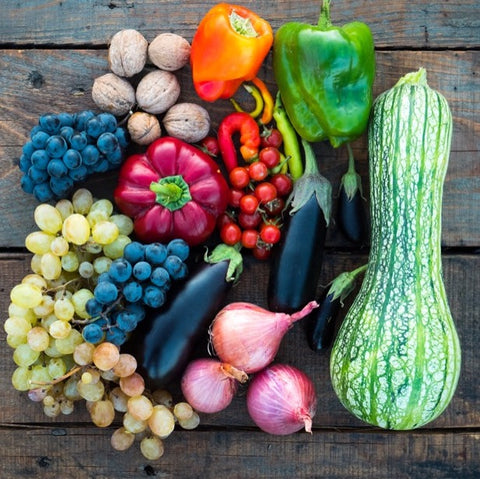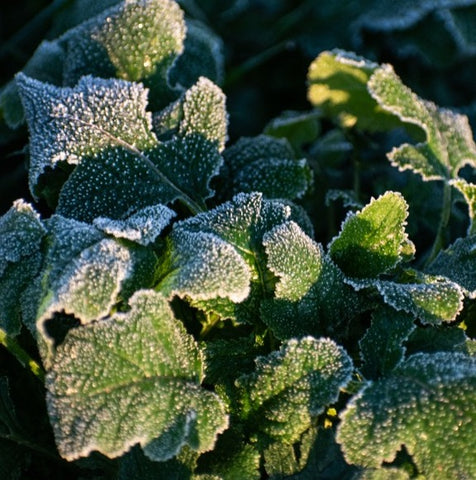To make your Summer veggie patch as productive as possible, there are a few key considerations and decisions to make. Careful planning is essential, so you can get growing as soon as the weather is right.
What Space Do You Have?
A rough sketch of your growing space is important for planning your veggie patch. Mark out all aspects and features such as growing areas, available pots, climbing trellises, shade structures and green houses. Gates, fences, walls, and shrub placement also play a part.

Your productive garden areas will change with the season due to how the sunlight and wind move. Large trees will provide lots of dappled shade, perfect for summer.
If you've been living at the same property for many years you should know the garden well, but if it’s your first year, there will be a little bit of guesswork.
What To Grow Where?
Now you know your space, you can work out what you are going to plant. A good question to ask yourself is who am I growing for and what do they like to eat? Then start placing your selections on to your garden plan.

Make sure that you consider both the size of plants when they are fully grown, and their growing needs. Sprawling plants such as pumpkin and melons should be at the edge of vegetable beds, so they don’t smother other crops.
Leafy crops like summer lettuce can benefit from the shade cast by taller plants or garden structures, and sweet corn should always be grown in blocks rather than a single row so that they can wind-pollinate properly.

Can you move pots around during the season to extend the growing period for plants that cannot hack the highs of summer but will revel in the spring sunshine? You may also need to consider temporarily installing some shade cloth to protect some plants from the hottest Summer days.
Quick crops such as radish, beetroot, bok choy, pak choy and spinach can be grown in between slower maturing crops, as they will picked and on the plate by the time that the larger plants need the space.
When To Plant?
Once you have your list ready of what you are going to grow, you can begin to research the different varieties available.
For Spring the main factor is frost. Frost is a nasty villain causing injuries by causing ice crystals to form in the plant cells, and is particularly damaging to tender new growth in the spring. Frost is classed as temperatures below 2°C so if you live in an area where this temperature or less occurs then a little research is required. Coastal areas of Perth Metro are unlikely to be affected by frosts but it is important to be alert if you live in the Perth Hills, Swan Valley or further inland towards the Wheatbelt. If you're growing veggies Down South frost is also a factor.

You also need to be aware of the soil temperatures required for germination, which can be measured with a simple thermometer. The germination temperatures can usually be found on the back of your seed packet. To give Spring seeds a head start you may need to place seed trays on a heat mat or use a greenhouse to promote germination if soil temperatures are too cold.
August Seed List for Perth
August marks the start of Djilba which is known as First Spring in the Noongar calendar. There is a wide range of seeds which can be planted this month:
Artichokes, Asparagus, Beetroot, Broccoli, Burdock, Cabbage, Cape Gooseberry, Capsicum, Carrot, Cauliflower, Celeriac, Celery, Chilli, Chives, Coriander, Dill, Eggplant, Endive, Fennel, Kale, Kohlrabi, Leeks, Lettuce, Onion, Parsley, Parsnip, Peas, Potato, Radish, Rocket, Silverbeet, Spinach, Strawberries, Turnip, Watermelon, Zucchini
September Seed List for Perth
September marks the start of Spring in the Gregorian calendar. If you're planning ahead for your Summer Veggie patch then here is a huge list of seeds to start in September.
Amaranth, Angelica, Artichokes, Asparagus, Asparagus Pea, Basil, Beans, Beetroot, Borage, Broccoli, Burdock, Cabbage, Cape Gooseberry, Capsicum, Carrot, Cauliflower, Celeriac, Celery, Chilli, Chives, Coriander, Cucumber, Dill, Eggplant, Endive, Kale, Kohlrabi, Leek, Lemon Balm, Lettuce, Luffa, Marjoram, Mint, Onion, Oregano, Parsley, Peas, Pumpkin, Radish, Rhubarb, Rocket, Rockmelon, Sage, Salsify, Savory, Silverbeet, Spinach, Spring Onion, Squash, Sunflower, Sweet Corn, Thyme, Tomatillo, Tomato, Turnip, Warrigal Greens, Watermelon, Zucchini
We have probably the largest selection of heirloom seeds in Perth from six local WA suppliers. Check out our seed list for an indication of the current range or pop into our Perth Eco and Garden Store to browse our full collection in our seed library.
What Garden Tools and Equipment Will You Need?
What garden tools will you need to have on hand for optimum success in your Summer Veggie patch? An afternoon in the shed going over all your gardening gear is a good chore for winter. Work out what’s tired and needs replacing, and which tools need a bit of TLC to see them through another season.
How about your soil? Does it need to be improved? The addition of organic matter through compost is one of the simplest ways we can build healthy soil. There are a wide range of soil amendments which can also be used to improve the quality, water retention and productivity of the soil in your veggie patch. Pop into our Perth Eco and Garden Store for free soil advice. We'd love to chat about what you're growing and how it's going!
Reference






Leave a comment (all fields required)